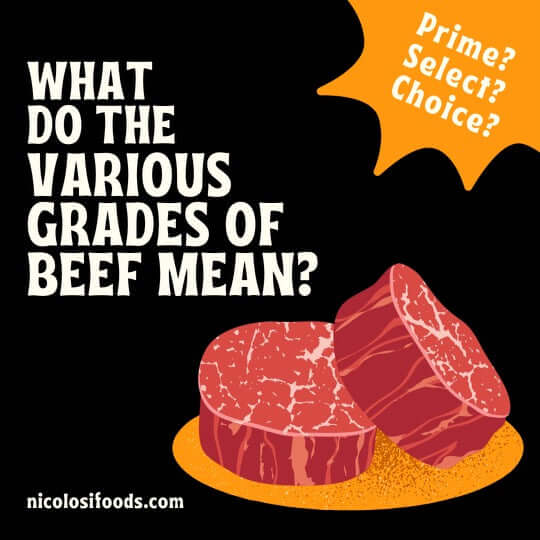
What do the Various Grades of Meat Actually Mean?
When you go to the grocery store or a restaurant, you'll often see various grades of meat labeled on the packaging or menu. But what do these grades actually mean? Do they make a difference in taste or quality? In this article, we'll dive into the world of meat grading and explain what each grade really means. Before we start, it's important to note that meat grading is a voluntary process conducted by the United States Department of Agriculture (USDA). It is not a mandatory requirement for all meats to be graded, but producers and retailers can choose to have their products graded for marketability and labeling purposes. Now, on to the grades.
Prime
The highest grade of meat is Prime, and it's typically reserved for the most high-end cuts, such as filet mignon, ribeye, and strip steak. Prime meat comes from young, well-fed beef cattle and has generous marbling, which is the intramuscular fat that gives the meat its tenderness, juiciness, and flavor. Only about 2% of all beef produced in the US is graded as Prime, making it the most expensive and sought-after grade of meat.
Choice
Choice Next up is Choice, which is the most widely available grade of meat in the US. It is still considered a high-quality grade but has less marbling compared to Prime. Choice cuts tend to be a bit leaner and may not be as tender or flavorful as their Prime counterparts, but they are still a popular choice for a good steak.
Select
Select is the third-highest grade of meat, and it is often referred to as the "basic" grade. It has less marbling than Prime or Choice and is considered average in terms of tenderness, juiciness, and flavor. It's a good option for budget-conscious consumers who still want a decent steak, but it may require more careful cooking techniques to prevent it from becoming tough and dry.
Standard
Standard grade meat is the lowest in terms of quality, and it's typically not sold in retail stores. Instead, it is mainly used for processed meats, such as hot dogs and sausages, or for ground beef. It has very little marbling, making it less tender and flavorful than the higher grades.
Utility, Cutter, and Canner
These three grades are not commonly seen or used in the market. They are mainly used for processed meats, canned products, or pet food. Utility is the highest of the three and is used for products such as ground beef or stew meat. Cutter and Canner grades are lower and have even less marbling, making them suitable for products like dog food.
It's worth noting that the grading process is not an exact science. While the USDA has specific guidelines for determining grades, it is still subjective, and there can be variations in the quality of meat within the same grade. The grade is also not a guarantee of flavor or tenderness, as cooking techniques and the cut of meat also play a significant role in the final product.
So, does the grade of meat really matter? The answer is both yes and no. For high-end cuts like ribeye or filet mignon, the grade does make a difference in terms of tenderness and flavor. But for ground beef or processed meats, the grade may not be as important as other factors such as fat content and additives. In the end, the best way to ensure you're getting a high-quality piece of meat is to buy from a reputable source and pay attention to the cut and marbling of the meat rather than just the grade. And don't be afraid to ask your butcher or server for recommendations based on your preferences and budget. We hope this article has shed some light on the different grades of meat and helped you make more informed decisions the next time you're shopping for a juicy steak or planning a BBQ. Happy cooking!
Prev post

You Think You Know Butts, But You Don't!
Updated on 29 August 2024
Next post

The Ultimate Guide to Grilling: Tips and Tricks for Cooking Our Meat to Perfection
Updated on 01 July 2024










